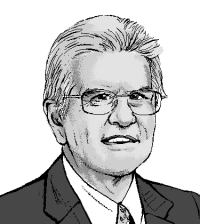In Europe, even occasional prayer is on the way out
It's not just disaffection with particular state churches. People's religious orientation itself is gone.

Stephen Bullivant is a highly respected British academic who, among other topics, studies the state of religion in contemporary Europe. He has just produced perhaps the single most depressing portrait of the Christian present and future on that continent—and that is not a genre noted for its optimism.
Drawing on the European Social Survey, Bullivant published a concise report, Europe’s Young Adults and Religion, to assist the deliberations of the Synod of Catholic Bishops that meets in Rome in October. The report covers the religious outlook of young adults aged 16 through 29. The levels of religious behavior and interest it depicts in most countries are extraordinarily low.
Read our latest issue or browse back issues.
In the Czech Republic, 91 percent of young adults claim no religious affiliation whatever, 8o percent never pray, and 70 percent never attend religious services. That country might be an outlier, but very low levels of religiosity also characterize Britain, the Netherlands, and Sweden. Although Bullivant does not stress this denominational angle, by far the grimmest conditions apply in what for centuries were the heartlands of Protestant Europe. Only 7 percent of English respondents identify as Anglicans (the state church), compared to 10 percent who identify as Catholics and 6 percent as Muslims.
The “never praying” category is striking, since it shows we are not just dealing with basically religiously oriented people who happen to be disaffected from particular state churches. The nonpraying population includes substantial majorities of young adults in France, Spain, Belgium, and Hungary. Bullivant’s picture is not wholly negative—he shows Christian belief and religious practice thriving in such countries as Poland, Lithuania, Ireland, and Portugal—but the direction is obvious.
More important than any specific statistic is Bullivant’s general observation that “Christianity as a default, as a norm, is gone, and probably gone for good—or at least for the next hundred years. . . . The new default setting is ‘no religion,’ and the few who are religious see themselves as swimming against the tide.”
That default concept is powerful. In most of the United States, religion (and specifically Christianity) is still the default, which conditions how people respond to pollster’s questions. In the U.S., it’s mostly only convinced unbelievers who would deny ever resorting to supernatural aid under any circumstances. That assumption about the normality of faith also contributes to Americans’ tendency to overstate their religious practice and church attendance.
In most of Europe, in contrast, that default condition simply no longer applies. Quite apart from whether one belongs to a specific church, religiosity is no longer viewed as normal or natural, and this is a historic shift. The common European response might be framed as: “Of course I don’t pray. Why would you even ask such a thing?”
It should be noted that Bullivant’s evidence does not necessarily forecast the replacement of a Christian Europe with an Islamic one. Although Muslims are well represented in the study, it is not likely that their faith will continue as vigorously after another few decades in the very secular atmosphere that now prevails across most of the continent.
Before writing the obituary for faith in Europe, some qualifications are necessary. For one thing, this study covers not the whole population but only young adults, and plenty of evidence shows that adults become more religiously active when they form families.
In forecasting the future of faith, the theme that emerges most strongly is that of immigration. Generally, non-European migrants tend to be far more religious than old-stock Europeans, and a great many of those newcomers are Christian. One reason why the Czech Republic is such a bastion of unbelief is that it has so few non-European migrants. Although its immigrant population is large, the vast majority of those recent arrivals are from other secular and secularizing European states.
Britain, in contrast, has a great many passionately Christian newcomers from the Global South, without whom London would probably appear as radically secular as Prague. Already, one-fifth of Catholics in the United Kingdom were not born in the country, and that figure does not take account of second-generation families. In Britain and elsewhere, the foreign and nonnative component in Christian churches will grow steadily in coming years.
Bullivant offers no sweeping agendas for re-Christianization or for a new evangelism. His most important lesson is that the churches can no longer make the slightest assumptions about a Christian core of beliefs and knowledge lingering in European societies. The age of mass Christianity—of default faith—is dead. European churches will survive, but as far smaller and more committed communities. They will have to learn to operate in a society that no longer has much sense of what to make of them and their curiously foreign ways.
Much like in the first Christian centuries, in fact.
A version of this article appears in the print edition under the title “Europe, secular by default.”







